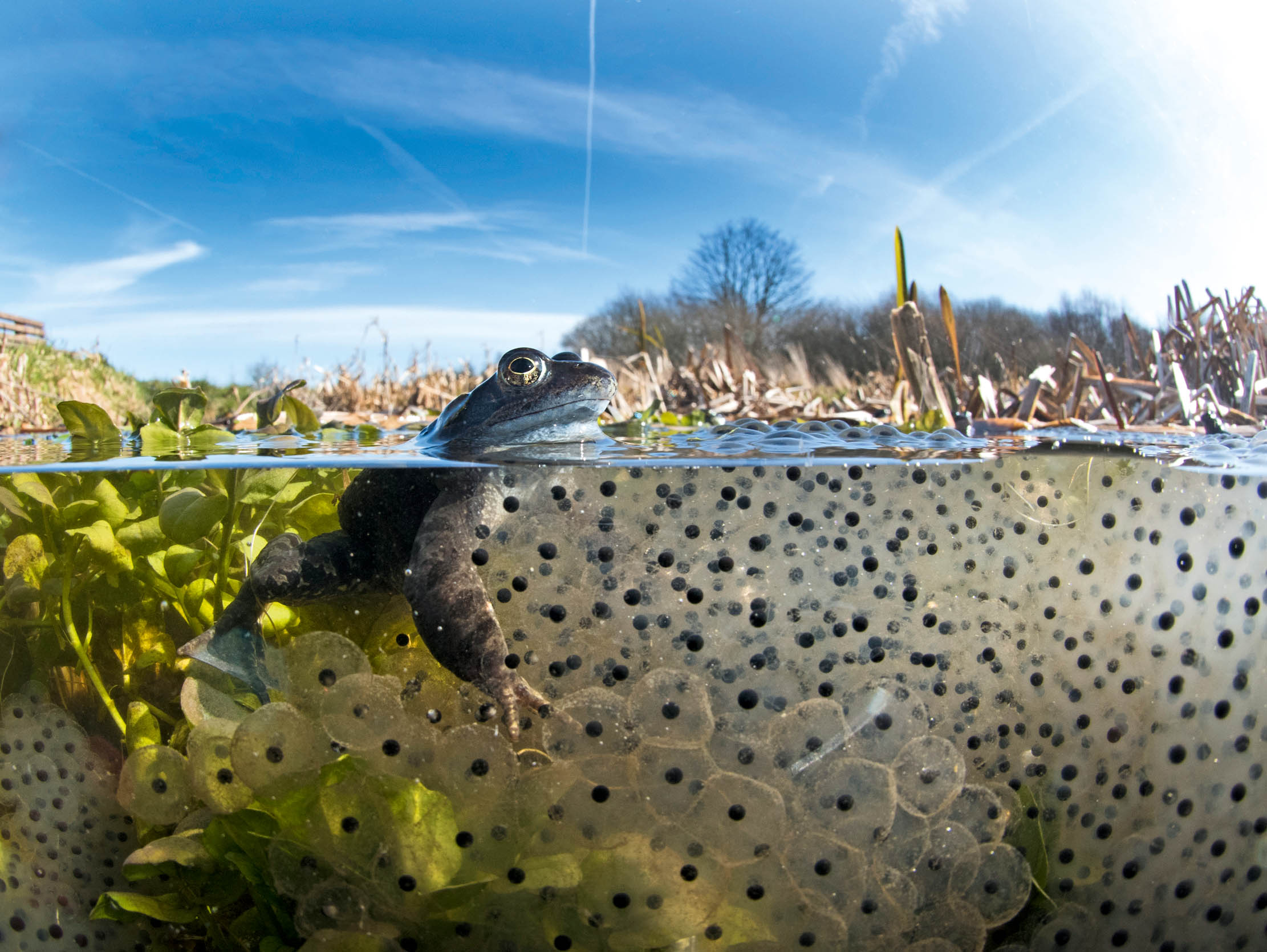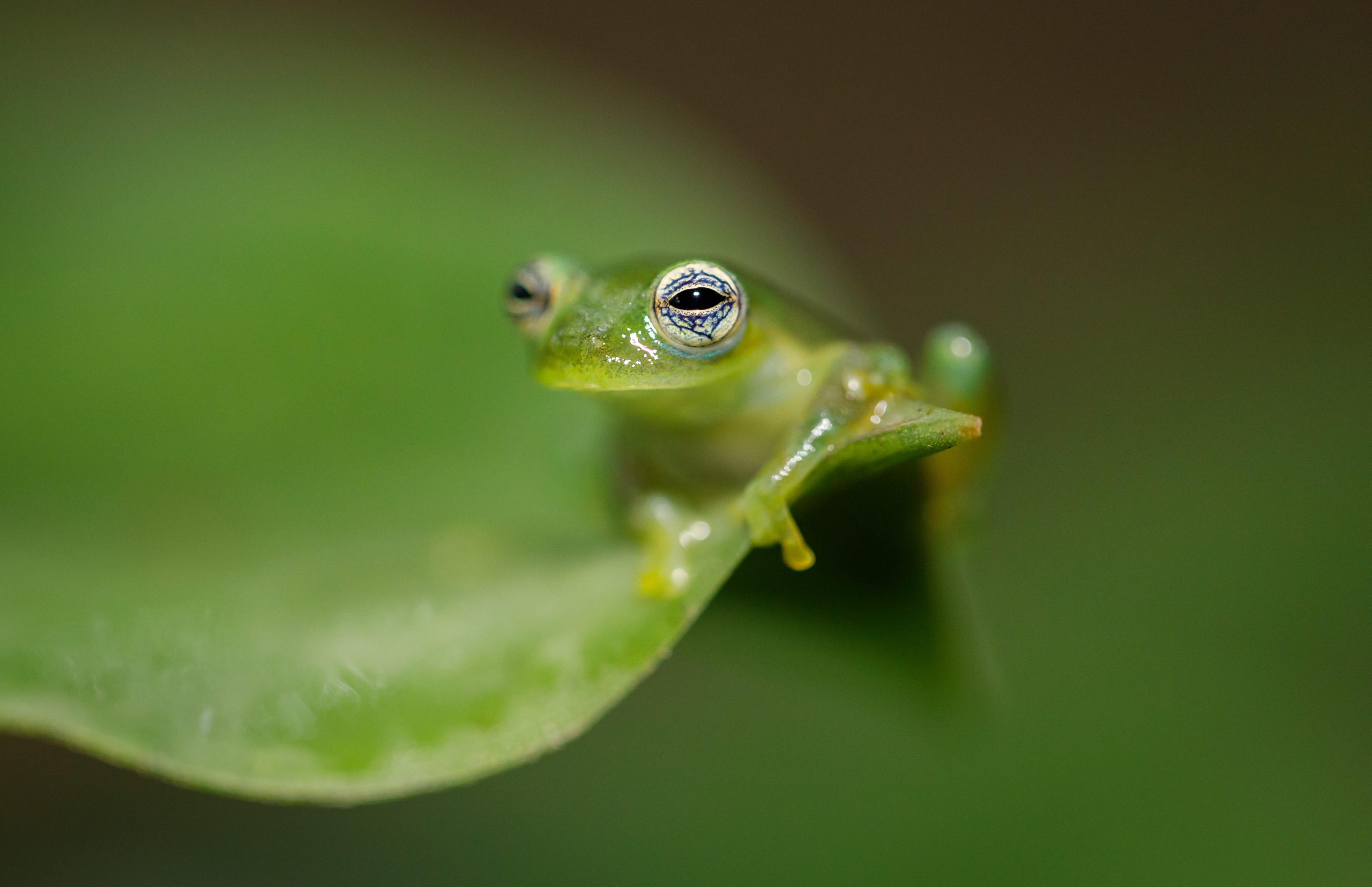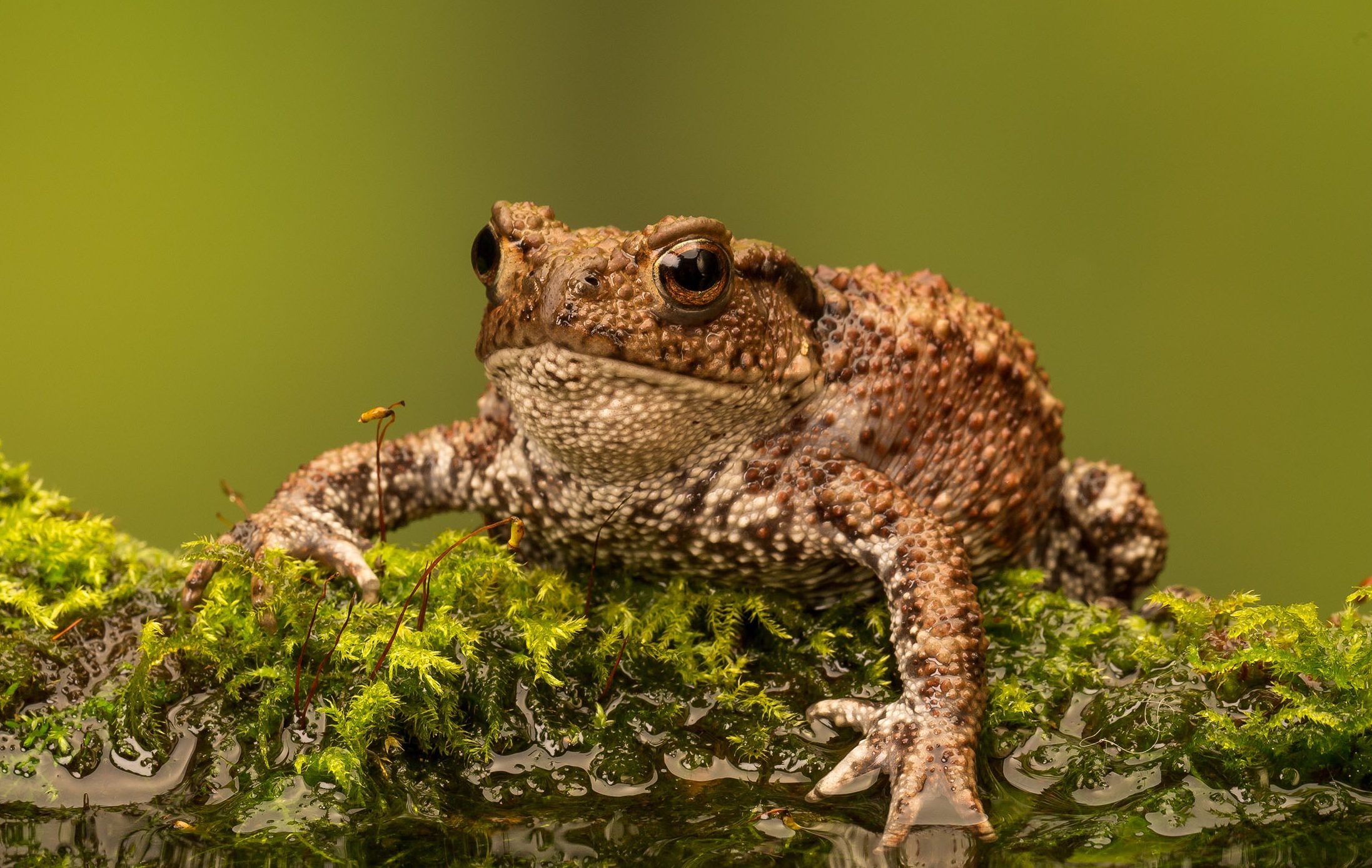Frogs: Why we love them, why we don't, and the real-life Kermit frog
Once a symbol of fertility and more recently a figure of fun, the frog has always loomed large in folklore, and not only as a means of finding a prince.


Frogs elicit strong emotions. The abhorrence some people feel is so intense that it bears not one, but two medical names — ranidaphobia and batrachophobia (which encompasses all amphibians).
Psychologists blame childhood experiences, but what did the harmless frog ever do to deserve rejection? For most children, at least in rural areas, the extraordinary process from spawn to tadpoles and frogs has always been among the most accessible of Nature’s annual miracles.
Frogs in literature
It’s a wonder that has often captivated the Arts. From Aristophanes’s play The Frogs (where they provided a chorus as the Greek god Dionysus journeyed to the underworld) via Mark Twain’s first published success — the 1865 short story The Celebrated Jumping Frog of Calaveras County — to Beatrix Potter’s 1906 Jeremy Fisher and Paul McCartney’s 1984 We All Stand Together, the amphibian has attracted writers and artists for more than two millennia.
Aesop featured frogs in five fables. The Brothers Grimm adopted the old German legend of the princess and the frog restored to princely status with a kiss, a storyline picked up by Disney. Even the Bible speaks of them badly: frogs were the second plague to hit Egypt, according to the Old Testament.
The frog has often been a comical caricature of manic energy and optimism in contemporary popular culture — not least thanks to Kermit, the puppet of Sesame Street and The Muppet Show. Apparently, the character was named after its creator Jim Henson heard mention of the alliterative name of a television sound engineer, Kermit Kalman Cohen. Surprisingly, the puppet has a remarkably similar ‘body double’ in the natural world.
Frog facts
- Fossil evidence has identified that frog ancestors were living some 250 million years ago, with calculations based on the rate of mutation (the so-called molecular clock) suggesting origins dating from 15 million years earlier
- The word ‘frog’ is believed to have emerged from the Old English frogga or frosc. Etymological links with modern German frosch and Norwegian frosk are obvious
- In scientific classification, frogs belong to the order Anura, ancient Greek for tailless. They account for 88% of all extant amphibians
- Friends of gardeners, frogs live largely on snails and slugs. They do not drink, but absorb water through their skin. They hibernate in pond mud or under logs
- Frogging is an ornamental jacket closure and braiding, often in expensive threads, and much used on military uniforms, especially by prestigious cavalry regiments. The word also applies to a fertility dance form in which participants mimic frog movements

Frogs in folklore
Frogs might have been one of the plagues in Egypt, but the ancient Egyptians actually saw them as a symbol of fertility: they were expected annually with the flooding of the Nile — and Egyptian polytheism included the fertility goddess Heqet, manifest both in frog form and as a frog-headed woman. For the Greeks and Romans, too, it represented fertility — but also licentiousness.
The Celts regarded it as a master of the earth, with curative and cleansing powers. In some mid-European areas, it was closely associated with female sensuality and hence with fecundity, both human and agricultural. Early Christian tradition linked its three stages of development with the Trinity, spiritual enlightenment and resurrection. Buddhism saw it as a symbol of good luck. Hinduism endowed it with command of the functioning of the earth and believed it was responsible for bringing the night.
Exquisite houses, the beauty of Nature, and how to get the most from your life, straight to your inbox.
In Chinese tradition, a frog image placed in an east-facing window encouraged childbirth and a happy family life. In Japan, the frog offered good fortune and, because it was pronounced similarly to the word for return, travellers carried frog amulets to ensure they got home safely. Hopping through history, no creature bestrode world faiths and cultures more than the frog.
British folklore also paid its due respects. In medieval England, a dried corpse might be carried in a pouch to avoid epilepsy. Together with its amphibian cousin, the toad, the frog was closely associated with witchcraft and played a part in the preparation of love potions. Early verses recording the charming tale of the frog ‘who would a-wooing go’ were set down in 1549 and 1580 and were put to music in 1611 by Thomas Ravenscroft, the first compiler of English folk material and nursery rhymes (his selection also included Three Blind Mice). Thought originally to be an elaborate lampoon tilted at four prominent Suffolk families, it told of cross-species amour (the object of the frog’s affections was a mouse) in defiance of his mother’s advice and was presented in an 1883 publication illustrated by Randolph Caldecott, an associate of the Bloomsbury Group and a strong influence on subsequent artists, including Potter, in their portrayal of anthropomorphic antics.
Which animals eat frogs?
Ravenscroft’s amorous frog was eventually gobbled up by a white duck — one of the many creatures that would have regarded it as the next meal. Our common species Rana temporaria is fare for herons, foxes, otters, water shrews, snakes and lizards, among others, although comparatively few make adulthood, as tadpoles (of which a female spawns 4,000 in a season) take up to 14 weeks to metamorphose into froglets and are on the menu of sundry hungry water and waterside dwellers. The miniature fully formed frogs found hopping away from pond and stream are equally vulnerable to the wide variety of animals and birds, which snaffle almost any small thing that moves.
The real-life Kermit the frog
A species of Costa Rican frog of the Centrolenidae family is lime green with bulging white eyes and black horizontal pupils, although it is only about one inch long and with a transparent underbelly. Batrachologists know it as Hyalinobatrachium dianae or Diana’s bare-hearted glass frog. To a wider audience, it has become known simply as the Kermit frog.

Costa Rica is also the last refuge of the planet’s rarest frog, Isthmohyla rivularis. Altogether, about 4,000 species of frog have been identified worldwide, with the greatest variety found in the Amazon basin — including luridly coloured ‘poison dart’ frogs, the secretions of which were traditionally used, together with curare, to tip the blow darts of indigenous tribes.

British frog species
Britain has another native species, in addition to the common frog: it’s the northern pool frog (Pelophylax lessonae), which was considered extinct in 1995, but was reintroduced in Norfolk with Swedish stock in 2005. England’s rarest amphibian, it thrives in fresh slow-moving waters, its loud duck-quack call generated by inflatable sacs on each side of its mouth.
We also have a 1930s introduction, the marsh frog (Pelophylax ridibundus), the call of which is said to resemble rather wild laughter. It was first established in Romney Marsh, Kent, which suited the brackish water conditions it needs, and fragile populations are now found in saltmarsh areas in Norfolk, Essex, Devon, Cornwall and the Isle of Wight.

Are frogs endangered?
Our common frog is not considered to be endangered, but climate change, extraction and pollution are depleting the damp areas and fresh waters on which it depends and ecologists are concerned about its future. Frog species are under the additional threat posed by an emerging fungal disease, chytridiomycosis, said to be spreading around the world and under urgent investigation by scientists, plus another global fungus, Batrachochytrium dendrobatidis, which has already accounted for some species abroad.
At least 200 frog species are said to have become extinct since 1970, more than half of them disappearing in the past 40 years. Among the most recent exits was Rabbs’ fringe-limbed tree frog of Panama, notable for the bizarre fact that males allowed their young to eat the skin off their backs.

The secret life of toads, from frenzied procreation to hunting snakes in the night
Despite their semi-webbed feet, warty skin and bulging eyes, toads are more endearing than Shakespeare’s witches would have us believe,

Hibernation: How it works, why animals do it, and the creature that can sleep for up to 11 months
Dormice sleep for months, hedgehogs snore in quilts of moss and wood frogs turn to ice — a spellbound John Lewis-Stempel

The English toads making their homes in the treetops — and baffling researchers at Cambridge
South America is famous for its tree frogs — but it turns out that Britain ought to be just as well
After some decades in hard news and motoring from a Wensleydale weekly to Fleet Street and sundry magazines and a bit of BBC, Ian Morton directed his full attention to the countryside where his origin and main interests always lay, including a Suffolk hobby farm. A lifelong game shot, wildfowler and stalker, he has contributed to Shooting Times, The Field and especially to Country Life, writing about a range of subjects.
